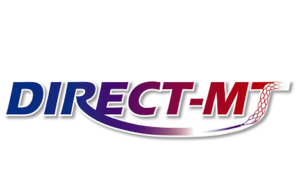 Investigators of the DIRECT-MT trial, who evaluated Chinese patients with acute ischaemic stroke from large-vessel occlusion, concluded that endovascular thrombectomy alone was non-inferior in terms of functional outcome, within a 20% margin of confidence, to endovascular thrombectomy preceded by intravenous alteplase administered within 4.5 hours after symptom onset.
Investigators of the DIRECT-MT trial, who evaluated Chinese patients with acute ischaemic stroke from large-vessel occlusion, concluded that endovascular thrombectomy alone was non-inferior in terms of functional outcome, within a 20% margin of confidence, to endovascular thrombectomy preceded by intravenous alteplase administered within 4.5 hours after symptom onset.
In the findings, published in The New England Journal of Medicine (NEJM), authors Pengfei Yang, Department of Neurosurgery, Changhai Hospital, Shanghai, China, and colleagues report that endovascular therapy alone was also associated with lower percentages of patients with successful reperfusion before thrombectomy (2.4%) and overall successful reperfusion (79.4%) compared with the combined-therapy group (7% and 84.5%, respectively). Moreover, mortality at 90 days was 17.7% in the thrombectomy-alone group, and 18.8% in the combination-therapy group.
DIRECT-MT was conducted at 41 academic tertiary care centres in China. According to Yang et al, patients with acute ischaemic stroke from large-vessel occlusion in the anterior circulation were randomly assigned in a 1:1 ratio to undergo endovascular thrombectomy alone, or endovascular therapy preceded by alteplase, at a dose of 0.9mn per kilogram of body weight, within 4.5 hours after symptom onset.
The primary analysis for non-inferiority assessed the between-group difference in the distribution of the modified Rankin scale scores (range, 0 [no symptoms] to 6 [death]) at 90 days on the basis of a lower boundary of the 95% confidence interval (CI) of the adjusted common odds ratio ≥0.8. Additionally, the investigators assessed various secondary outcomes, including death and reperfusion of the ischaemic area.
Of 1,586 patients screened initially, the investigators enrolled 656 patients from February 2018 through to July 2019: 327 assigned to thrombectomy-alone and 329 assigned to the combination-therapy group. “The baseline characteristics of the patients were similar in the treatment groups,” the authors write, adding that the median age was 69 (interquartile range: 61–76), and 56.4% of patients were male.

In a corresponding editorial also published in NEJM, Gregory Albers from the Stanford Stroke Center, Palo Alto, USA, alludes to the fact that while non-inferiority of direct mechanical thrombectomy was established, the margins used to declare non-inferiority were “generous”. “The confidence intervals did not exclude a benefit of approximately 20% in the combination-therapy group,” he writes, adding: “In fact, a similar Japanese trial did not establish the non-inferiority of thrombectomy without alteplase pretreatment to thrombectomy alone.”
In addition, Albers acknowledges the improvements in reperfusion from the addition of intravenous thrombolysis, but questions why they did not translate into clinical benefit. “One possibility,” he says, “is that the brief time in this trial between the administration of alteplase and the initiation of thrombectomy did not allow adequate time for the intravenous effect to be expressed
“The mismatch between the high percentages of patients with reperfusion and the much smaller percentages of patients with clinical recovery in thrombectomy studies suggests that a substantial volume of brain tissue is already irreversibly injured in many patients by the time reperfusion occurs,” he adds.
Albers speculates that to improve outcomes in future stroke trials, adjunctive therapies like thrombolytic or neuroprotective agents might be started early, either at the primary stroke centre or in the prehospital setting. Regardless, he cautions: “Until more data are available, it is appropriate to follow current guidelines that recommend that all eligible patients receive alteplase before thrombectomy.”













